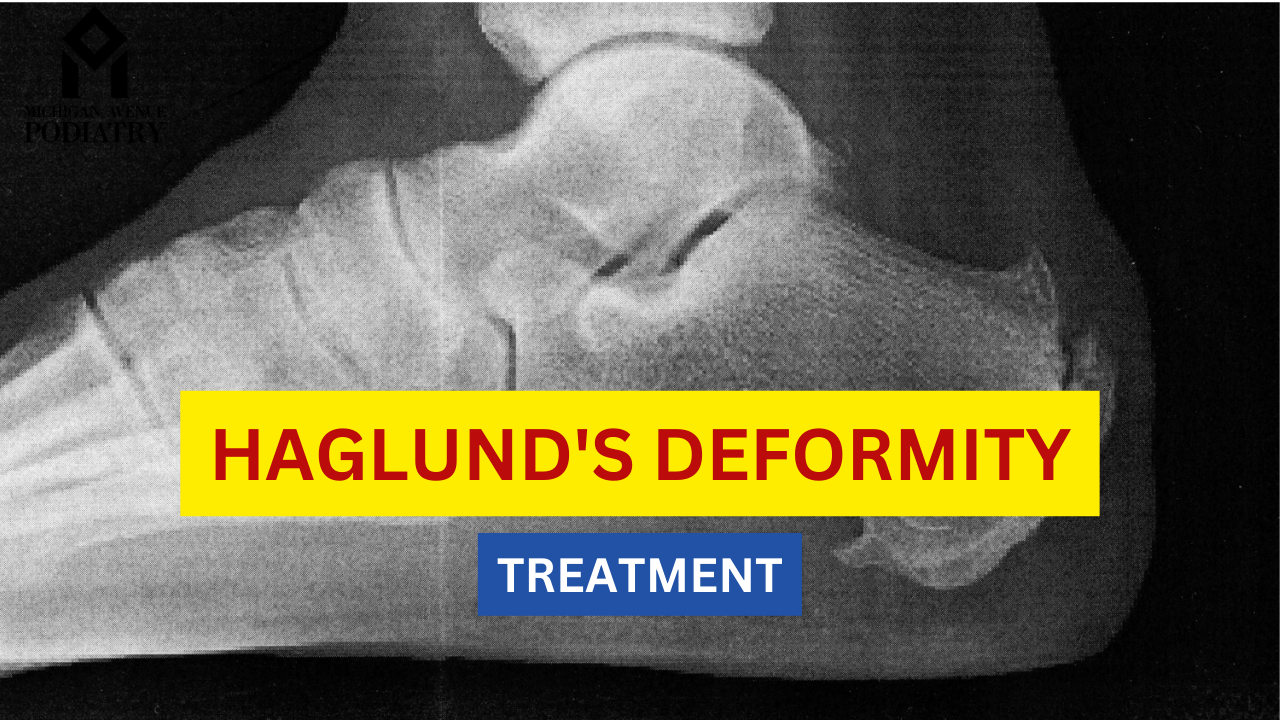Haglund’s deformity, also known as pump bump, is a bony enlargement at the back of the heel. This protrusion can irritate the surrounding bursa (fluid-filled sac) and Achilles tendon, causing pain, inflammation, and difficulty walking. While not life-threatening, Haglund’s deformity can significantly impact your daily life and comfort.
This guide explores Haglund’s deformity, its causes and symptoms, and how a chiropractor can play a role in its management. We’ll also discuss when surgery might be necessary and provide tips for preventing this condition.
Understanding Haglund’s Deformity:
Haglund’s deformity primarily affects women who wear shoes with stiff backs, such as pumps. The constant friction against the back of the heel irritates the underlying bone, causing it to enlarge. Other contributing factors include:
- Tight Achilles tendon: This can limit ankle movement and put additional stress on the heel bone.
- High arches: This foot structure can cause the heel to strike the ground differently, increasing pressure on the back of the heel.
- Repetitive activities: Activities like running or jumping can put repetitive stress on the heel, leading to Haglund’s deformity.
Symptoms of Haglund’s Deformity:
- Pain and tenderness at the back of the heel, especially when wearing shoes
- Bony bump at the back of the heel, visible and often tender to touch
- Redness, swelling, and warmth around the bump
- Difficulty fitting into shoes due to the bump
- Pain and stiffness in the ankle, particularly when bending the foot downwards
The Role of a Chiropractor:
While podiatrists (foot specialists) and foot doctors often diagnose and manage Haglund’s deformity, a chiropractor can play a valuable role in its non-surgical treatment. Here’s how:
- Pain Management: Chiropractors use various techniques, such as spinal adjustments, joint manipulation, and soft tissue mobilization, to help reduce pain and improve mobility in the ankle and foot.
- Inflammation Reduction: Techniques like ultrasound therapy and electrical muscle stimulation can help decrease inflammation and promote healing around the affected area.
- Improving Joint Function: Chiropractic adjustments and specific exercises can improve the range of motion in the ankle and foot, reducing stress on the heel.
- Postural Correction: Addressing postural imbalances that contribute to Haglund’s deformity, such as tight hamstrings or a weak core, can help prevent further irritation.
When to Consider Surgery:
If non-surgical treatments fail to provide adequate relief, your doctor might recommend surgery. This typically involves removing the bony prominence and addressing any associated soft tissue issues. Consulting with a podiatrist or foot surgeon specializing in Haglund’s deformity is crucial for determining if surgery is the right course of action.
Preventing Haglund’s Deformity:
Here are some tips to decrease your risk of developing Haglund’s deformity:
- Choose appropriate footwear: Opt for shoes with soft, flexible backs and avoid wearing shoes that rub against the back of your heel for extended periods.
- Maintain a healthy weight: Excess weight puts additional strain on your feet and ankles, increasing the risk of Haglund’s deformity.
- Stretch regularly: Regularly stretching your calves and Achilles tendon can improve flexibility and reduce stress on the heel.
- Strengthen your core: A strong core helps maintain proper posture and reduces pressure on your feet and ankles.
Conclusion:
Haglund’s deformity can be a painful and debilitating condition. While surgery might be necessary in some cases, chiropractic care can offer a valuable non-surgical approach to managing pain, improving mobility, and preventing further complications. If you experience pain or a bony bump at the back of your heel, consult a healthcare professional, such as a podiatrist or chiropractor, for a proper diagnosis and discuss the best treatment options for you.
To schedule an appointment with our board-certified foot and ankle specialists, Book Your Appointment Now



